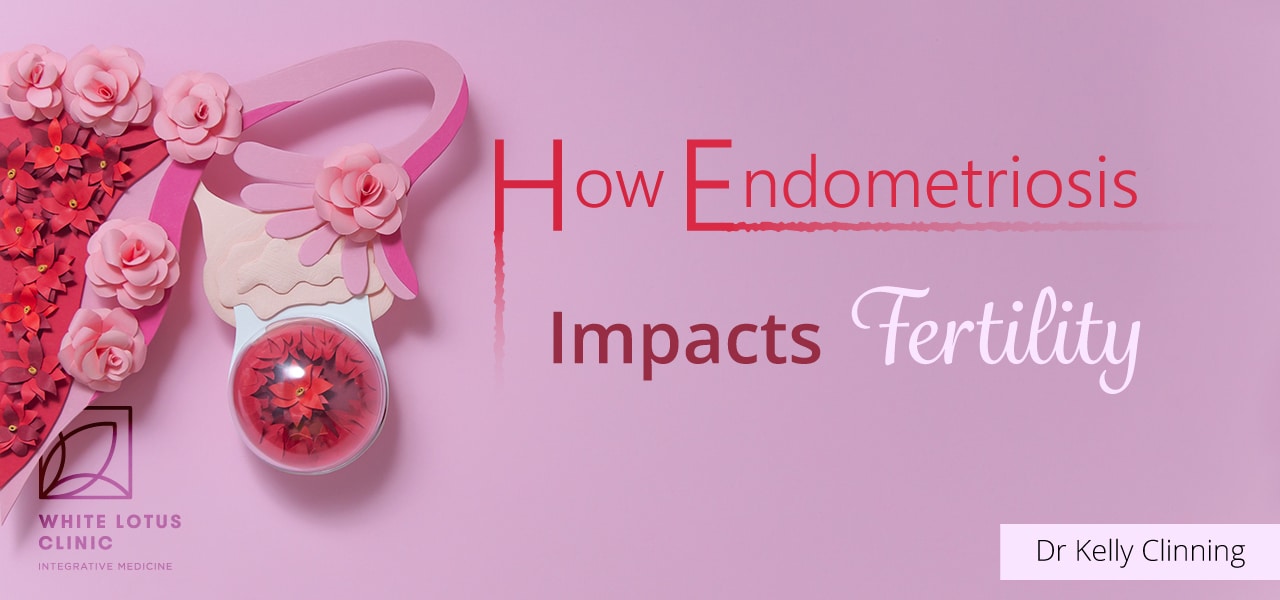Endometriosis affects approximately 1 in 10 North American women. Frustratingly, it isn’t unusual for a woman to suffer from symptoms such as intense pain, fatigue, and heavy periods for up to a decade without a formal diagnosis! In addition to this, many women aren’t informed of the link between endometriosis and fertility.
Studies suggest that endometriosis plays a role in up to 25–50% of infertility cases in women of reproductive age1. Understanding how and why endometriosis impacts fertility is still being investigated, but we’re beginning to see more research highlighting why this may be. Below, I’ll take you through a high-level review of a recently published study. It outlines what research currently tells us about the connection between endometriosis and fertility.
Inflammation & Immune Dysfunction
Immune dysfunction and resulting inflammation are major drivers in endometriosis. Additionally, they likely play a significant role in egg reserve and quality2.
In women with endometriosis, the fluid within the abdominal cavity has significantly increased levels of pro-inflammatory cytokines. These include tumour necrosis factor (TNF)-α, interleukin (IL)-1β, IL-6, IL-8, and IL-10, among many others. Since the fluid within the abdominal cavity surrounds the ovaries and ovulating eggs, this inflammation and immune dysfunction could damage the eggs. This in turn leads to reduced egg quality and quantity2.
Research has also found evidence of increased inflammatory markers and markers of oxidative stress within the follicular fluid itself2.

HPO Axis Changes
Endometriosis also impacts the hormonal axis that drives ovulation. This is known as the hypothalamic-pituitary-ovarian axis (HPO-axis)2. Studies have found a link between endometriosis and elevated prolactin—a hormone that can impact ovulation. Endometriosis has also been associated with an abnormal luteal phase, as well as reduced receptivity to the LH hormone that triggers ovulation2. These findings further illustrate the connection between endometriosis and fertility.
Anatomical Changes
When endometrial tissue and/or resultant scarring is found on the ovaries or the fallopian tubes, it can create a physical barrier. This prevents the egg and sperm from meeting, or can prevent an embryo from moving through the fallopian tube to the uterus2.
This anatomical impact is likely playing a role in more advanced endometriosis cases. Many women with earlier stages have reduced fertility, but no evidence of anatomical changes2.
The relationship between fertility and endometriosis is complex. As a result, we’re constantly learning more about how to support and treat these women.
For women who have been formally diagnosed with endometriosis, I hope this information can help guide treatment. And for those who haven’t, hopefully will lead to further investigation!
Next Steps
For more details on how endometriosis impacts fertility, you can read the full study review here.
And of course, if you’re in Ontario or the greater Toronto area and are ready to get a naturopathic perspective, you can book an appointment with one of our Naturopathic Doctors at the White Lotus clinic here.
References
1 Lin, X., Dai, Y., Tong, X., Xu, W., Huang, Q., & Jin, X. et al. (2020). Excessive oxidative stress in cumulus granulosa cells induced cell senescence contributes to endometriosis-associated infertility. Redox Biology, 30, 101431. doi: 10.1016/j.redox.2020.101431
2 Broi, M., Ferriani, R., & Navarro, P. (2019). Ethiopathogenic mechanisms of endometriosis-related infertility. JBRA Assisted Reproduction. doi: 10.5935/1518-0557.20190029





